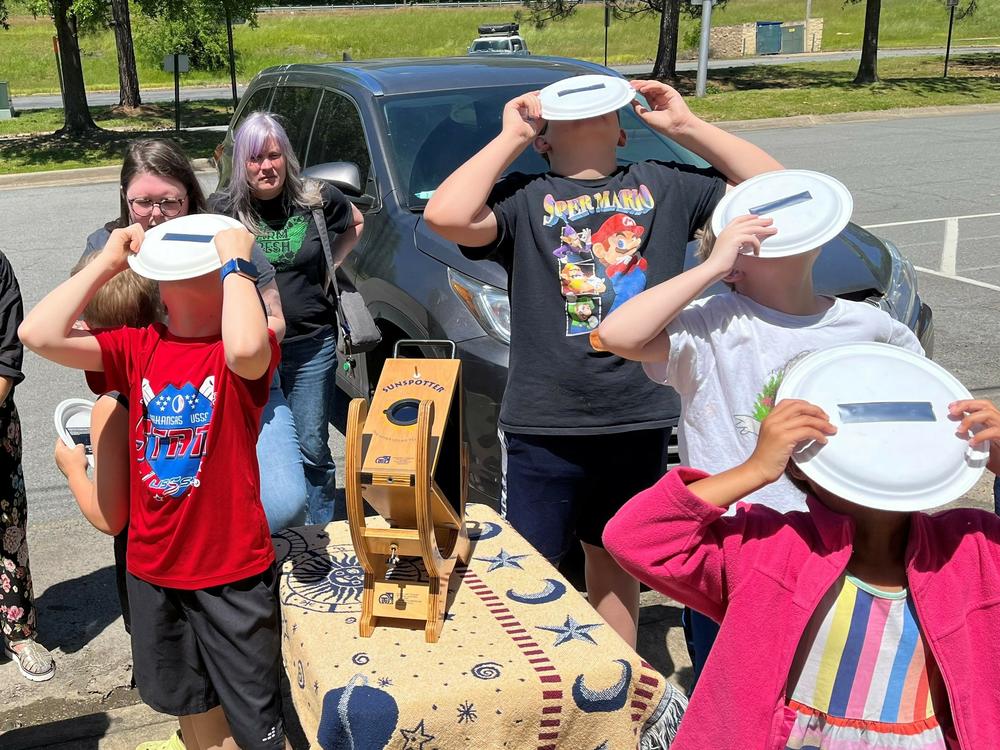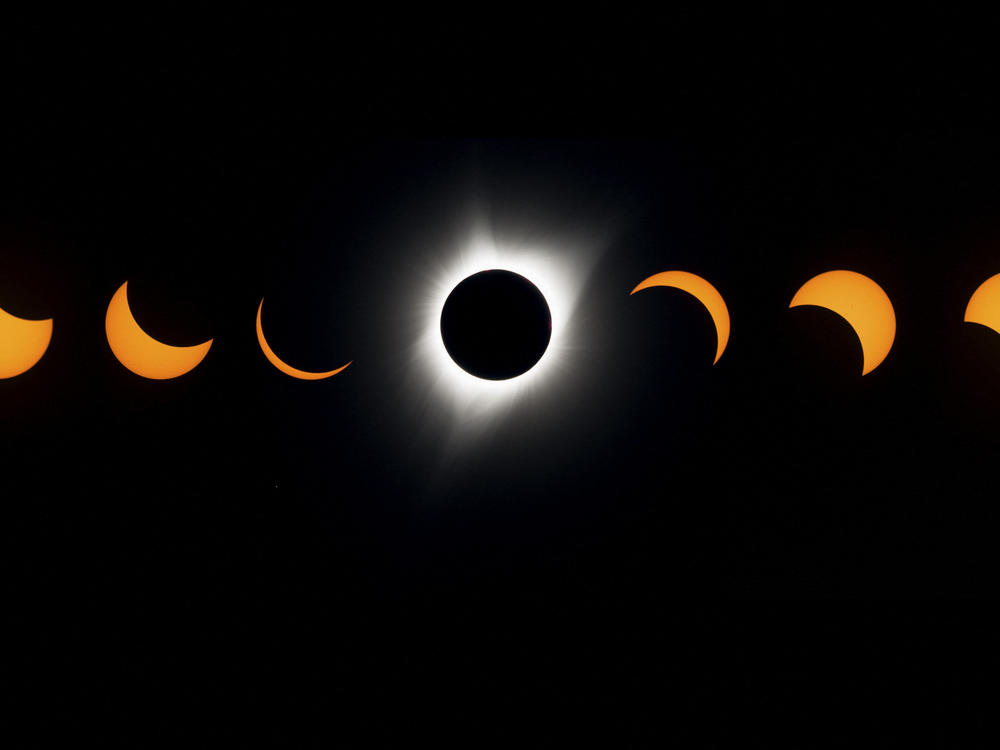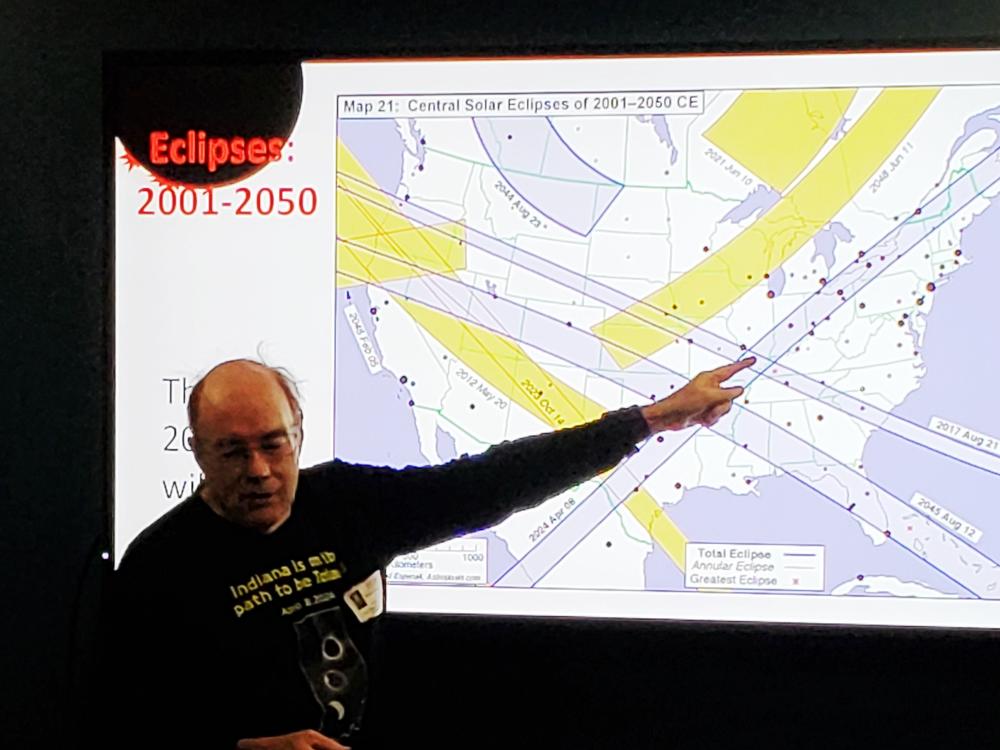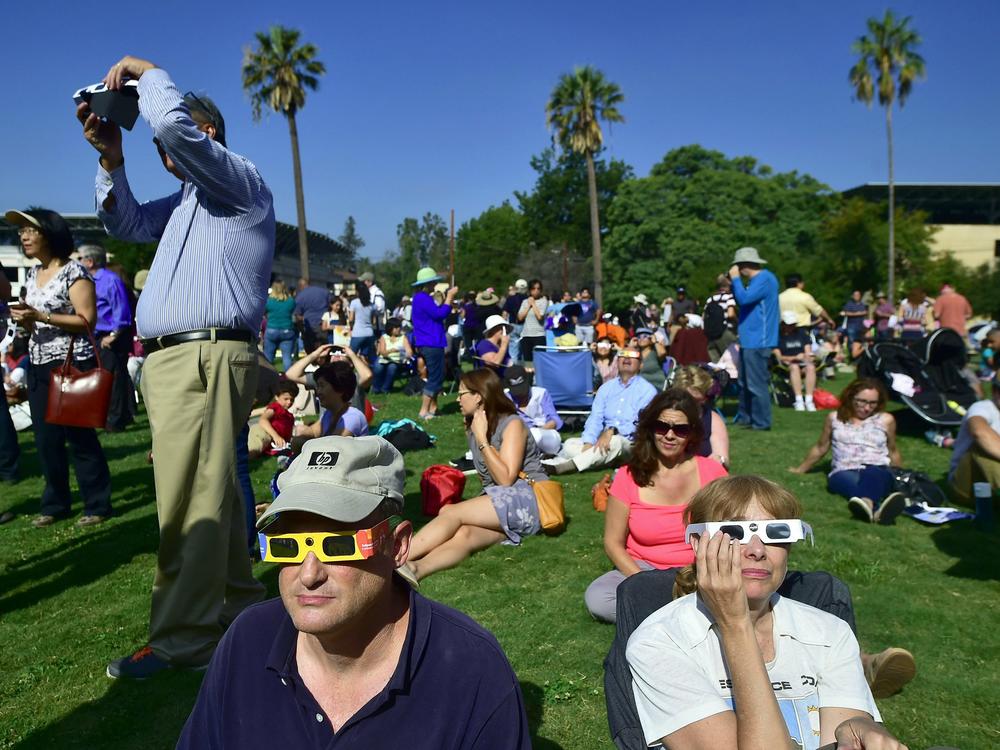Section Branding
Header Content
The eclipse gives astronomy clubs an opportunity to shine
Primary Content
Danielle Rappaport has been fielding a flood of emails about the upcoming total solar eclipse: where to go and how to view what will be, for many people, a once-in-a-lifetime event. With San Antonio the first major U.S. city to glimpse the eclipse, Rappaport, the outreach coordinator for the local astronomy club, has some advice: Get out of town.
"Actually, it's only going to hit the westernmost part" of the city, she says. And any place in the path of totality — the moment when the moon perfectly covers the sun — that is easily accessible by road will be inundated with gawkers gazing skyward. "San Antonio is going to get swamped," she says.
While some of her fellow members of the San Antonio Astronomical Association will be at Northwest Vista College on April 8 to distribute eclipse glasses and answer questions, Rappaport is heading to Garner State Park, about 100 miles west of the city, to avoid the crowds. She recommends that others stay out of the cities.
Loading...
The eclipse in the San Antonio area will begin at 12:14 p.m. CDT, with totality arriving 80 minutes later.
Rappaport and others in the San Antonio club have been busy giving public lectures on the eclipse, with a strong emphasis on safety — making clear that no one should look at the sun without darkened eclipse glasses or other equipment designed specifically for observing the sun. Many people, she says, are confused about what an eclipse even is. Others just want to know where the best place is to view it.
If you're not in the path of totality, you can still see a partial eclipse
In North America, an estimated 31 million people in the narrow path of totality will have a shot at viewing the total eclipse. Others will see at least a partial event — perhaps a bit less impressive, but still worth it, Rappaport says.
Of course, it all depends on the weather.
There won't be another chance to view a total solar eclipse anywhere in the contiguous U.S. until 2044 — and that one will be visible only in parts of Montana, North Dakota and South Dakota.
In Little Rock, members of the Central Arkansas Astronomical Society are trying to make the most of this year's event. Darcy Howard has had her head in the eclipse for more than two years now, "doing outreach and education and training the trainers and talking to libraries and talking to schools and talking to anybody who will listen," she says.
She says that informing the public is a key goal of the 130-member society for the "peace of mind" it will bring them on April 8. "So when the time comes, we can feel confident that people know how to look, what to look for and how to watch the eclipse safely."
The visually impaired can be helped to "see" the eclipse
Part of her work is with the Little Rock-based World Services for the Blind. "How do you describe an eclipse to a person with low vision or who has never had sight?" she says. "This is a challenge and I'm looking forward to it."
One aid she's using is Getting a Feel for Eclipses, published in Braille by NASA. According to the space agency, the book features "[tactile] graphics [providing] an illustration of the interaction and alignment of the Sun with the Moon and the Earth."
About 15 minutes after totality in Little Rock, the residents of Indianapolis will get their first glimpse of the big show. Steve Haines, the public events coordinator for the Indiana Astronomical Society, is a little concerned about the weather.
"Actually, there's about a 60% chance of cloud cover that day," says Haines, a retired lead forecaster with the National Weather Service in Indianapolis who has looked at climatological trends in the state.
He's planning to be at The Children's Museum of Indianapolis on eclipse day, where his group will have a couple of telescopes set up. The society, the oldest and biggest astronomy club in the state, also has printed and distributed 15,000 eclipse brochures to libraries across central Indiana. And Haines says he and other club members have given at least 50 eclipse talks. "I just drove the other day a hundred miles away to give a talk."
There's a downside to "eclipse tourism"
Like Rappaport in San Antonio, Haines is concerned about traffic congestion and crowds. "You have a lot of highways that converge on Indianapolis. That's why it's called the crossroads of America," he says. "So, we're going to get an influx of people from Chicago and northern Illinois to eastern and central Ohio."
Some small towns hoping to cash in on eclipse fever might get more people than they bargained for, he cautions. There are billboards advertising the eclipse in some places. Two Indiana cities, Evansville and Muncie, have even run prominent ads in Astronomy, the magazine confirms.
In Williston, Vt., located just east of Burlington, near Lake Champlain, where the Vermont Astronomical Society is based, totality will arrive at about 3:26 p.m. EDT. President Jack St. Louis says the society is making a big push to bring the eclipse message to the public.
St. Louis will be at ECHO, Leahy Center for Lake Champlain, "and we have members who are going to be at libraries and schools and supporting different areas along the way," he says.
He says some people have heard the warnings about looking directly at the sun but missed the part about how to safely view the eclipse. Others are wondering if they should even bother if they don't live in the path of totality. "We tell them any place you can see the sun in the afternoon, you're good."
Staying mobile could increase your chance of catching the eclipse
Farther north, Jon Silverman, president of the Central Maine Astronomical Society, says members are keeping their fingers crossed for good weather but are prepared to move quickly to ditch the clouds.
"The real hardcore eclipse chasers look at the weather on the morning of the eclipse and they dash to where they think it's going to be clearest," he says.
But the roads in the state may complicate that, he says. "The thing about Maine is that ... there are lots of roads going north and south and very few going east and west," Silverman says. "Once you commit to where you're going, your ability to shift east and west is limited."
The eclipse's northernmost point in the U.S. is in the town of Houlton, Maine, reaching totality almost an hour (3:32 p.m. EDT) after San Antonio. Houlton is planning a weekend of festivities running through the Monday eclipse, including singers, comedians, crafts and a "metaphysical tent" featuring crystals, astrology and tarot card readings.
"The towns that are on the path or even near the path are promoting it heavily and hoping to not just have a good and busy and financially rewarding eclipse, but to get people to want to return," he says.
For all of the excitement the eclipse has created, Silverman says there are also those who couldn't care less. "No interest. That just boggles me. This is such a wonderful, rare thing to see. A gorgeous thing," he says.
But there are no guarantees, even for the enthusiasts. Silverman says the weather is the biggest "if" in the equation, pointing out that Maine is not the best place to avoid clouds in April.
"One of my friends in our astronomy club booked a flight to Mexico. ... He has a good 80% chance or higher of seeing the eclipse," Silverman says.
"You can go down to, say, Texas or someplace down there, but it's not a huge advantage," Silverman says. So he plans to stay put and hope for the best.




